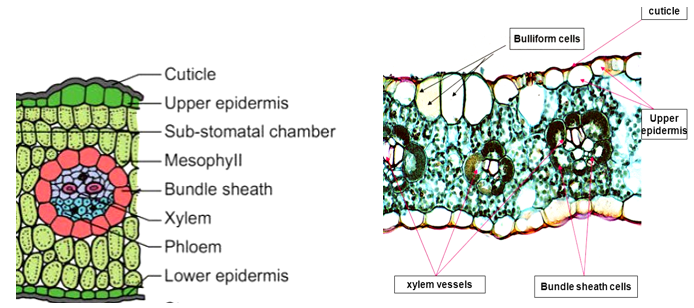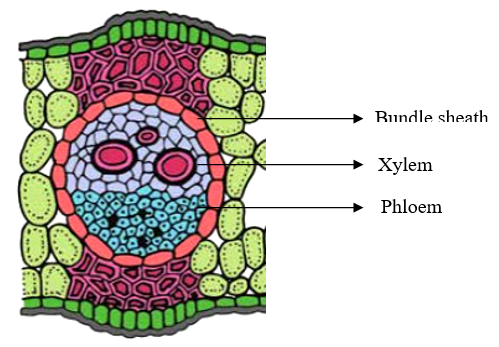Monocotyledonous leaf (Isobilateral / Equifacial Leaf)
In monocot leaves, the internal structure of both upper and lower leaf surfaces look similar.
Epidermis
- The epidermis is composed of barrel shaped parenchyma cells.
- It bears cuticle and epidermal hairs.
- In grasses, the epidermal cells are impregnated with silica.
- In these plants, some cells are modified into large, empty, colorless and round shaped cells called bulliform cells or motor cells.
- These cells contracts during dry season resulting in the curling up of leaves.
- When the bulliform cells absorb water, they become turgid and leaves are exposed.
- During try season, these cells become flaccid and cause the leaves to curl up to prevent water loss.
- Stomata are present in both upper and lower surfaces.

Mesophyll
- The mesophyll is not differentiated into palisade or spongy layer.
- It is composed of large spongy cells with chloroplasts.
- The cells are isodiametric with intercellular spaces.
Vascular Bundles
- Due to parallel venation, the vascular bundles are of nearly same size in all veins, except in the midrib.
- The bundles are surrounded by a bundle sheath. It also contains chloroplasts.
- Xylem is seen on the upper side, and phloem is seen on the lower side.
- Xylem contains tracheary elements.
- Phloem consists of sieve tubes and companion cells.

| Dicot leaf | Monocot leaf |
|
|
|
|
|
|
|
|
|
|
|
|
|
|